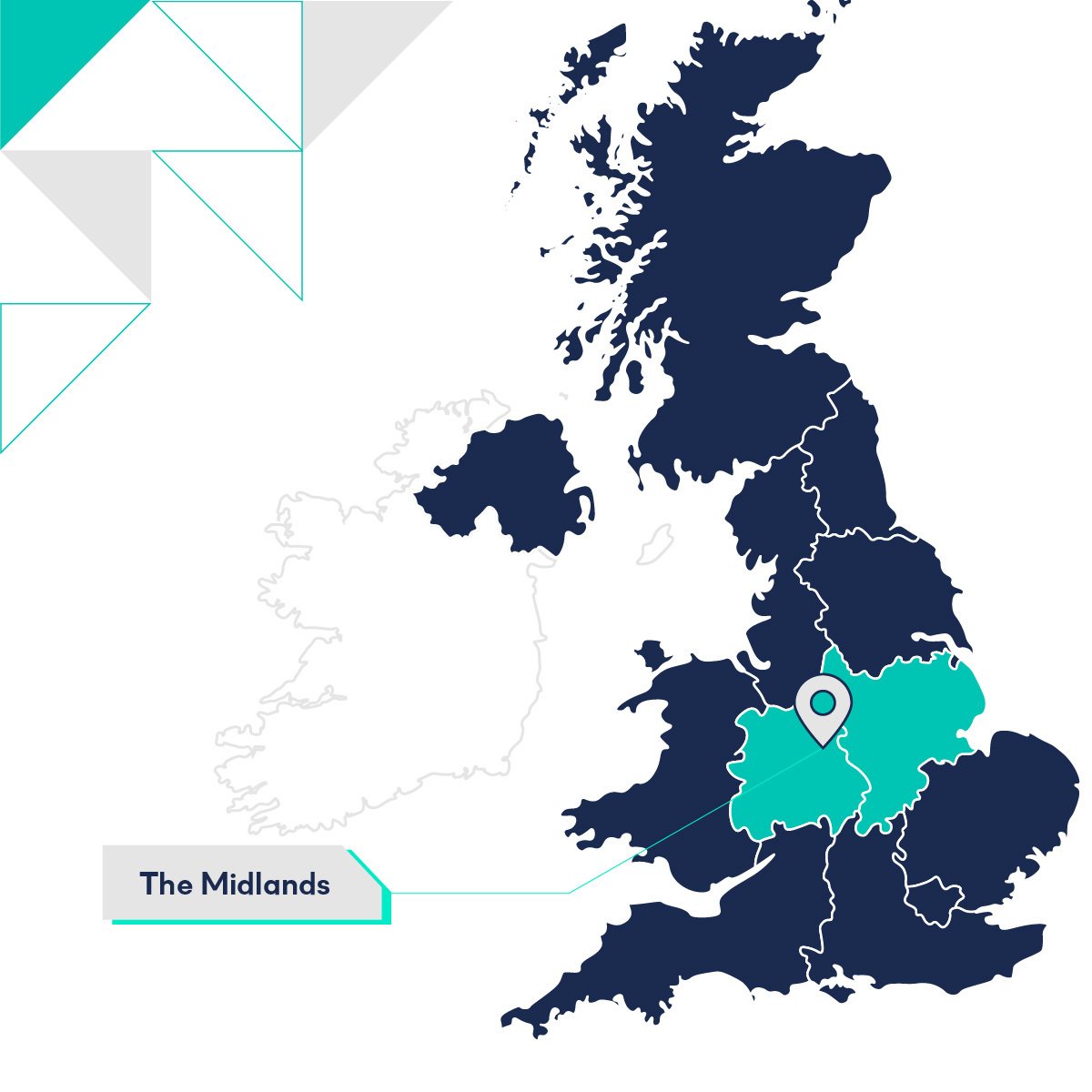Introduction
In this Regional Market Report series we examine land constraints impacting the Midlands.
We’ll be taking a look at the proposed changes to the National Planning Policy Framework (NPFF), focusing on the various land constraints and which local authorities are most impacted.

Planning in the Midlands
In December 2022, the Government released a range of changes to the current national planning policy (the NPPF), as well as a prospectus outlining further policy changes that will come in 2023. Among the most significant changes proposed within this update relate to the protections afforded to Green Belt.
While the Midlands is not as affected by Green Belt policy to the same extent as the South East, or the North West, development in the areas around Birmingham and Coventry, Nottingham and Derby, and around Stoke-on-Trent, are likely to be affected.
Currently, local unmet housing need can be used as part of the ‘exceptional circumstances’ that can allow Green Belt to be released from protection as part of a Local Plan review, or as part of the ‘very special circumstances’ to allow protected Green Belt to be built on as part of a (usually speculative) development. The latter usually takes place during an appeal and in situations where local policies are out of date or where a five-year land supply cannot be demonstrated.
The changes proposed to the NPPF make it explicit that Green Belt does not have to be reviewed to allow housing targets to be met, it also protects Councils from speculative development in cases where they do not have a five-year land supply – if their Local Plan is less than five years old. These changes will come into effect immediately upon publication of the new NPPF.
On top of all this, the long-awaited Biodiversity Net Gain requirements brought in by the Environment Act, are due to kick in in 2024. This may bring further delays as developers battle it out over offset sites that may be necessary to make larger green-field sites deliver the required 10% uplift in biodiversity. In light of all this, it will be very interesting to see how the Housing Delivery numbers change over the coming months.
Related Resources
If you've enjoyed the data insights about land constraints in the Midlands, check out our other reports for the region below:
- The Midlands: Demographics
- The Midlands: Strategic Land
- The Midlands: Determination Periods, Approval and Overturn Rates
- The Midlands: The Housing Market